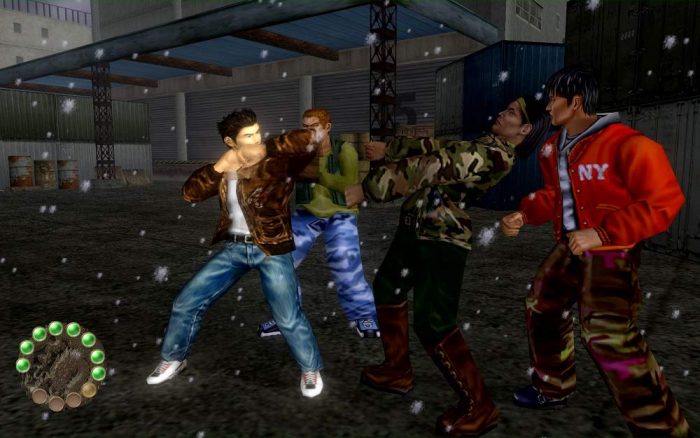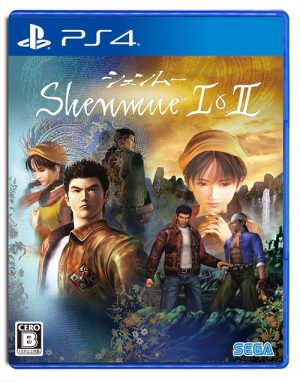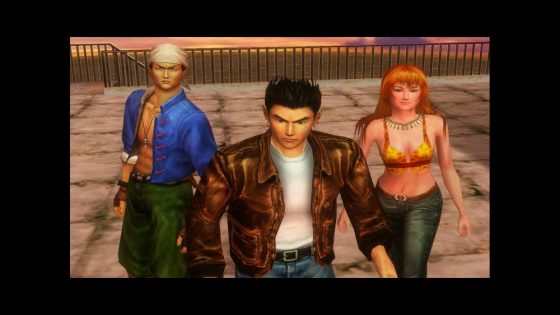
Between 1999 and 2001, Shenmue, the Sega Dreamcast’s killer app, hit shelves around the world and to critical acclaim. Many gamers and game journalists loved (and hated) how it simulates everyday life with how it operates on a time cycle, how you can get a job, and how you can talk to just about every person you see on the street. Despite the (in)famous criticism of its English release, Suzuki admitted to liking it, and many non-Japanese fans see it as part of Shenmue’s identity. What some found mundane, others felt a unique passion for detail, which has been a staple of Yu Suzuki’s arcade games. As opposed to playing the game, Suzuki’s goal is to make you feel the experience, and Shenmue was the ultimate expression to his style.
However, when you get to the end of Shenmue II, it finishes on one of the biggest cliffhangers in probably all of entertainment history! Between then and 2015, the franchise was in development Hell until Suzuki launched a highly successful Kickstarter campaign to continue the saga. So between then and now, how did Shenmue became a long-lasting cult hit?
The Original Open World Game

As we shared in a previous article, what largely contributes to how Shenmue continues to resonate is that it is considered the first ever open world game. Though open world games have become mainstream since the previous console generation, not many of them present their worlds as a livable world in the same way Shenmue does. With Grand Theft Auto V, while we agree that it’s fun to wreak havoc in Los Angeles, it treats its world more like a playground as opposed to an actual world, and we’re not saying there’s anything wrong with that. With Shenmue, you can interact with the people just by exchanging simple greetings, or asking for help. Some characters are willing to help Ryo, and there are others who brush him off. In many open world games, you don’t really get such rich interactions and the NPCs don’t stand out.
In Shenmue II, some NPCs go out of their way to take you to where you need to go. This form of interaction and exploration is something that isn’t seen in any other open world games since a dot on the map can just take you there. Again, we’re not saying that’s a bad thing, but just by discovering things as you go along allows players to feel more immersed in the world of that game and experience it in a realistic manner. The fact that Shenmue’s characters feel like they exist as they live out a daily routine, and not for the character to be a victim to the player’s amusement of randomly assaulting them gives further definition to experiencing an actual world, so when you go to such a real location, you’re prepared.
A Digital Journey to a Real Location
What largely contributes to its lasting appeal is how it accurately portrays Yokosuka, Hong Kong and Guilin. Thanks to Shenmue, it inspired fans to actually visit these locations. When you visit the actual Yokosuka or see pictures or videos on the Internet, it’s amazing how they look almost one in the same. Beyond the vending machines, you can visit actual jacket stores, military surplus supply stores, the shrine or a flower shop like in the game! Heck, maybe you can practice your martial arts in an empty parking lot or park.
In the case of Shenmue II, though the Kowloon walled city was torn down in 1997, the closest you can get to it is the Warehouse Arcade in Kawasaki, which is north of Yokosuka. There, you can enjoy similar arcade classics which are playable in Shenmue such as Space Harrier and OutRun.
Forklifts
Another quality that has been subjected to both praise and criticism is driving the forklifts in the first game, which was necessary to advance the story. Since Ryo works as a forklift driver for a majority of disc 3 in the original Dreamcast game, the feature has been synonymous with the game. Many love how you can start the day with a forklift race and then get to work moving crates, and get into a fight in-between shifts with the Mad Angels, and there are others who just found it pointless and monotonous. Many fans enjoy it because it makes work fun and gives players a difference pace, and they can enjoy a sea view of Yokosuka harbor.
The 18-year Cliffhanger
As previously stated, Shenmue II ends on a cliffhanger when things are about to go Indiana Jones with Ryo and Shenhua in the cave. The sequel excellently expanded the story, but it ends with more questions and answers. Upon the ending, fans wanted to know what came next. Unfortunately, the discontinuation of the Dreamcast was announced shortly prior to Shenmue II’s release in Japan and in order to make a profit, Sega had to sell two copies per Dreamcast due to its high budget. After that, nobody knew for sure what happened, but fans were determined to never give up because they wanted a true ending to the saga, which is the one of the top reasons why it became a long-lasting cult hit!
Final Thoughts

As social media became the norm, fans could easily unite behind a mainstream platforms such as Twitter, and make their voices heard through their monthly #SaveShenmue campaign. In E3 2015, Suzuki announced a Shenmue III Kickstarter and within 24 hours, it met and doubled its $2 million goal! After another hard fought campaign, present generation consoles got an HD remix to the original Dreamcast games last summer gaining new fans in the progress. Thanks to having unique qualities that have yet to be seen in many present day open world games with a saga that needs to be finished, it created one of gaming’s greatest cult classics consisting of fans who never gave up.
Recommended Post
3 Reasons to Play Shenmue HD
Recommended Post

